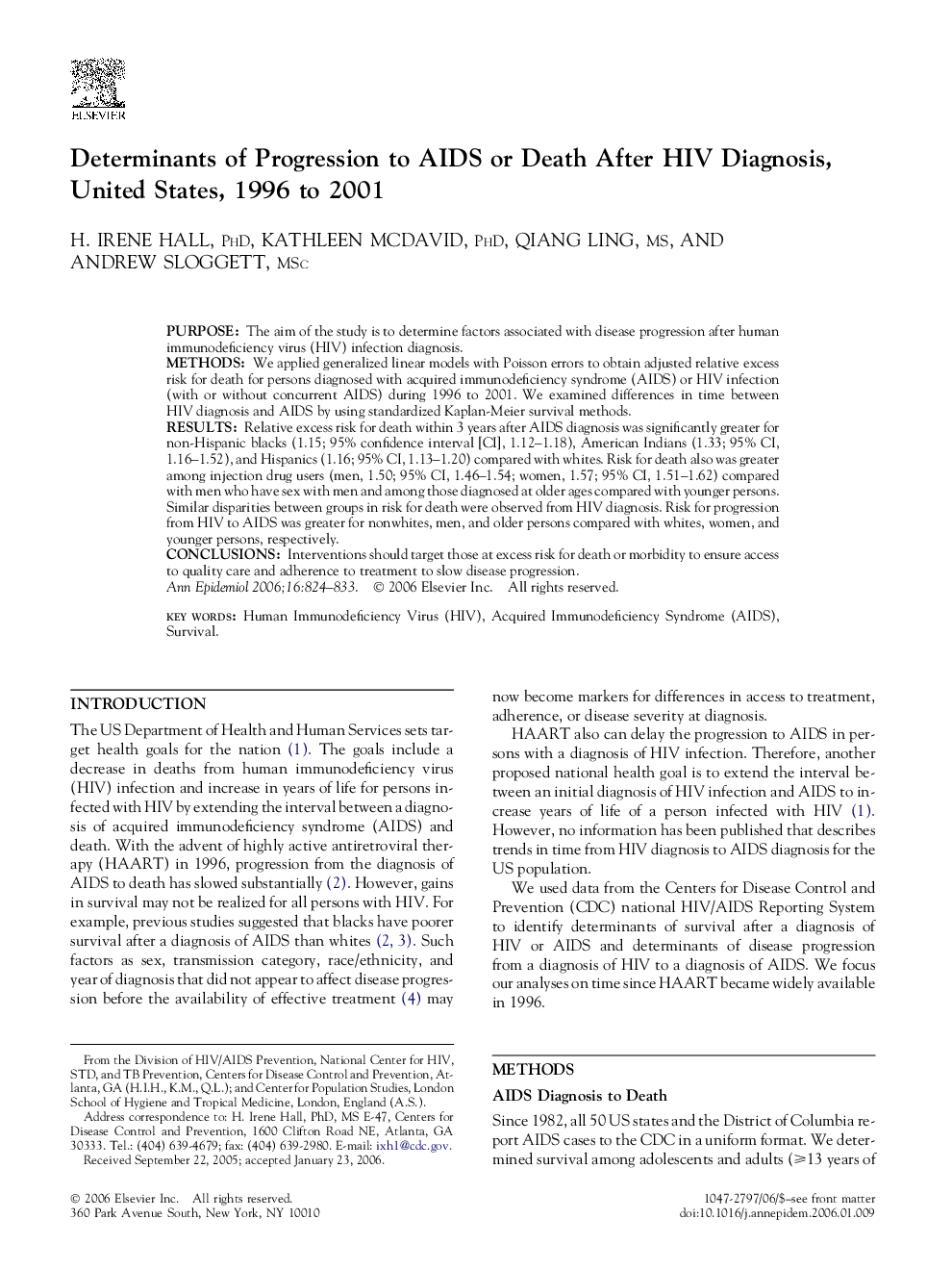| کد مقاله | کد نشریه | سال انتشار | مقاله انگلیسی | نسخه تمام متن |
|---|---|---|---|---|
| 3445870 | 1595346 | 2006 | 10 صفحه PDF | دانلود رایگان |

PurposeThe aim of the study is to determine factors associated with disease progression after human immunodeficiency virus (HIV) infection diagnosis.MethodsWe applied generalized linear models with Poisson errors to obtain adjusted relative excess risk for death for persons diagnosed with acquired immunodeficiency syndrome (AIDS) or HIV infection (with or without concurrent AIDS) during 1996 to 2001. We examined differences in time between HIV diagnosis and AIDS by using standardized Kaplan-Meier survival methods.ResultsRelative excess risk for death within 3 years after AIDS diagnosis was significantly greater for non-Hispanic blacks (1.15; 95% confidence interval [CI], 1.12–1.18), American Indians (1.33; 95% CI, 1.16–1.52), and Hispanics (1.16; 95% CI, 1.13–1.20) compared with whites. Risk for death also was greater among injection drug users (men, 1.50; 95% CI, 1.46–1.54; women, 1.57; 95% CI, 1.51–1.62) compared with men who have sex with men and among those diagnosed at older ages compared with younger persons. Similar disparities between groups in risk for death were observed from HIV diagnosis. Risk for progression from HIV to AIDS was greater for nonwhites, men, and older persons compared with whites, women, and younger persons, respectively.ConclusionsInterventions should target those at excess risk for death or morbidity to ensure access to quality care and adherence to treatment to slow disease progression.
Journal: Annals of Epidemiology - Volume 16, Issue 11, November 2006, Pages 824–833